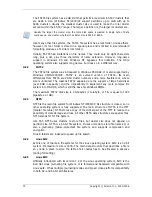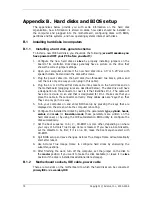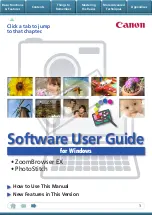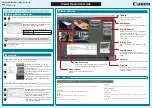
Translation mode is how sector addresses are translated. This parameter appeared because
in BIOS versions, there were limitations to the maximum address capacity of disks, which is
504 MB (1024 cylinders x 16 heads x 63 sectors x 512 bytes). There are two ways to
bypass this limitation: (1) switch from physical to logical sector addresses (LBA), (2) use
mathematics to reduce the number of addressed sectors (cylinders) and increase the
number of heads; this method is called Large Disk (Large). The simplest decision is to set
the value of this parameter to Auto.
If there are several hard disks connected to your motherboard, but you do not want
to use some of them at the moment, you have to set the Type of these disks to Not
Installed.
Parameters of hard disks can be set manually with the help of information provided
by the hard disk manufacturer on its case, but it is easier to use the IDE
autodetection utility that is usually included in modern BIOS versions.
The utility is sometimes a separate BIOS menu item and sometimes is included in
the standard CMOS setup menu.
Please note that in 0, «Appendix B. Hard disks and BIOS setup», we have described the
general details of
physical
hard disk structure. Built-in IDE hard disk controls mask the
physical disk structure. As a result, the BIOS of the motherboard «sees»
logical
cylinders,
heads and sectors. We are not going to elaborate on this issue here, but knowing about this
can sometimes be useful.
B.2.3 Arranging
boot
sequence, advanced CMOS setup menu
Aside from standard CMOS setup, BIOS menu usually has an
advanced CMOS setup
item. Here you can adjust the
boot sequence
: C:; A:; CD-ROM:.
Please note that
boot sequence
management differs for various BIOS versions, e.g. for
AMI BIOS, AWARDBIOS and brand-name hardware manufacturers.
Several years ago, the operating system boot sequence was hard-coded into the
BIOS. An operating system could be booted either from a diskette (drive A:), or
from the hard disk C:. That was the sequence in which the BIOS queried external
drives: if drive A: was ready, BIOS attempted to boot an operating system from a
diskette. If the drive was not ready or there was no system area on diskette, BIOS
tried to boot an operating system from hard disk C:.
At present, BIOS allows booting operating systems not only from diskettes or hard
disks, but also from CD-ROMs, DVDs and other devices. If there are several hard
disks installed in your computer labeled as C:, D:, E:, and F:, you can adjust the
boot sequence so that an operating system is booted from, for example, disk E:. In
this case, you have to set the boot sequence to look like E:, CD-ROM:, A:, C:, D:.
This does not mean that booting is done from the first disk in this list; it only means that
the
first attempt
to boot an operating system is to boot it from this disk. There may be no
operating system on disk E:, or it can be inactive. In this case, BIOS queries the next drive
in the list. Errors can happen during booting, see B.2.5 «Hard disk initialization errors».
The BIOS numbers disks according to the order in which they are connected to IDE
controllers (primary master, primary slave, secondary master, secondary slave);
next go the SCSI hard disks.
This order is broken if you change the boot sequence in BIOS setup. If, for
example, you specify that booting has to be done from hard disk E:, numbering
76 Copyright © Acronis, Inc., 2000-2006






































